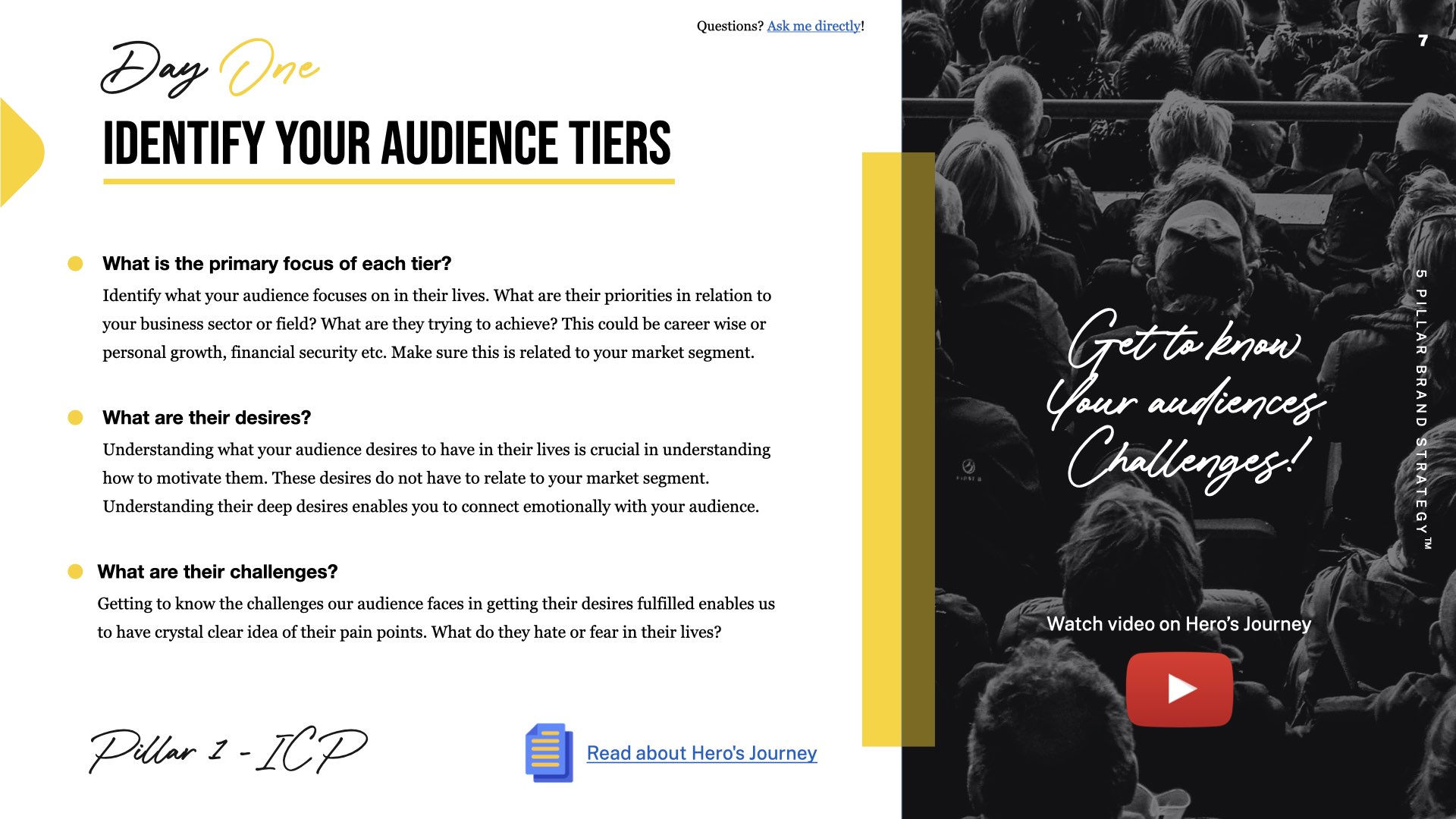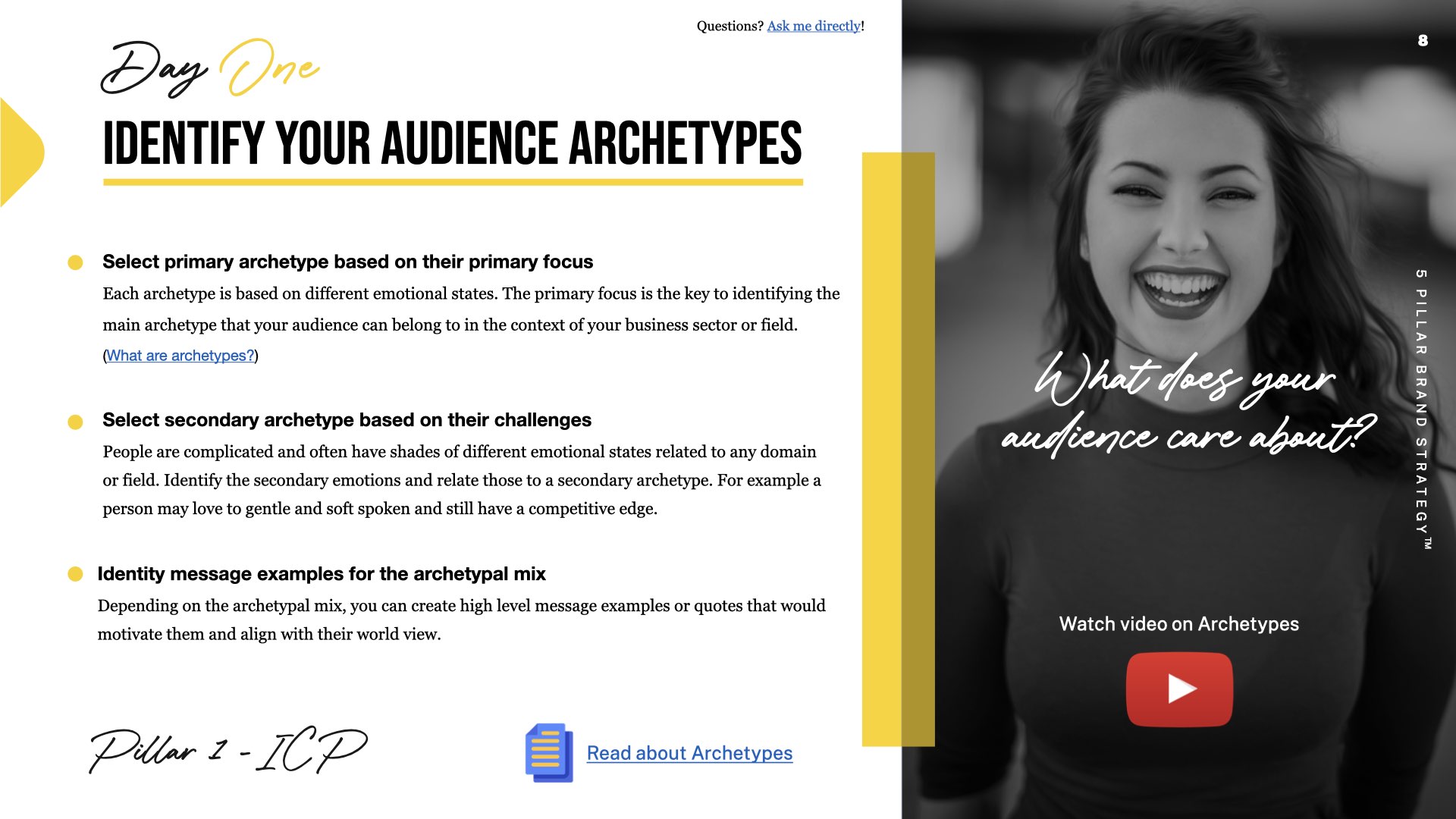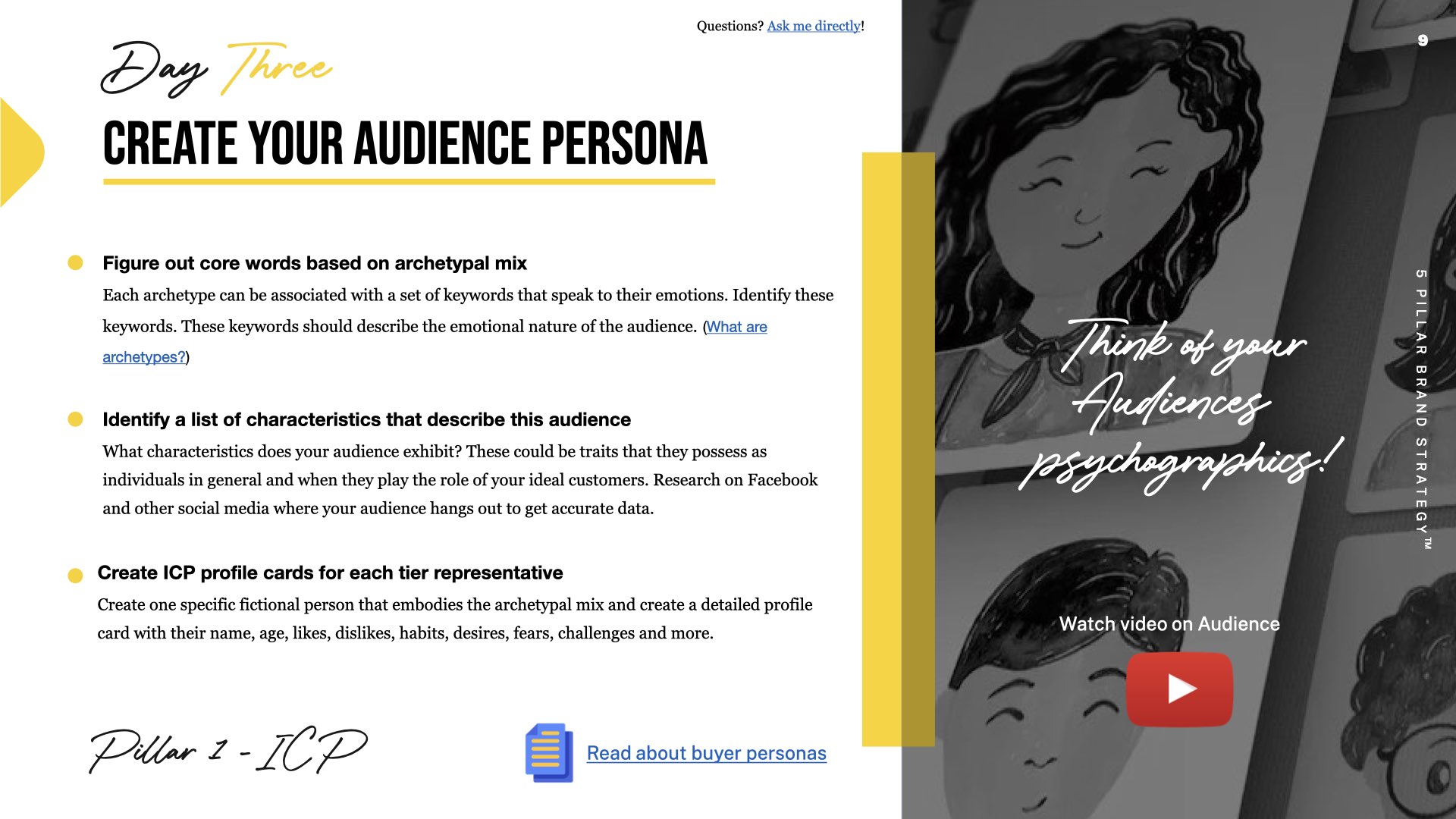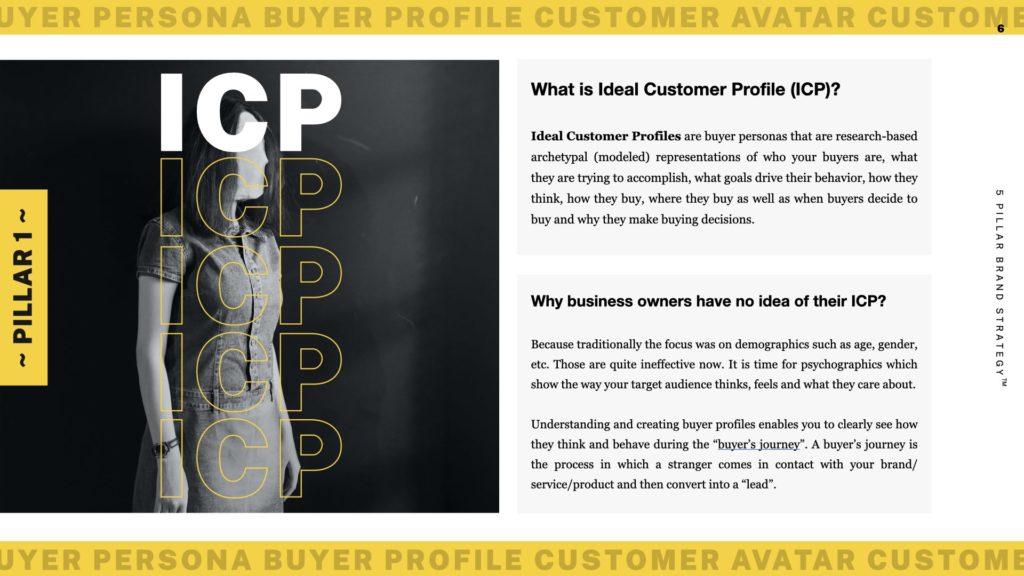Summary:
Figuring out our ICP led us to create a million-dollar business. An ideal customer profile is an avatar of your best customer and details the feelings, thoughts, likes, dislikes, desires, fears, and more of that person.
What you will learn in this article:
- What is an ICP, and how powerful it is
- Why business owners do not go for an ICP
- How can you create an ICP to double or triple your revenue overnight
- Exact action steps to create your own ICP
This is the first pillar of our powerful 5 Pillar Strategy.
I founded a graphic design firm in 1998. It became one of the first online logo design companies in 2002.
Fast forward to 2012, the design firm was at the world’s top. We were clearing a million dollars a year and working on hundreds of projects.
Life was good.
Then Google struck! It released the Panda update that negatively affected hundreds of thousands of websites!
Our website was part of that collateral damage.
Overnight we lost everything. Our sales dropped 95%.
We tried to stay afloat for almost ten months. I paid my team their salaries so we did not lose the talent.
But finally, the day came when we ran out of savings and corporate credit. We had to make the sad decision to let go of everyone and close shop.
That was the darkest week of my life.
Fast forward to 2017 – we were back. We hit a million dollars in revenue once more! I had hired back over 80% of the original team.
How did I do that?
The most important epiphany that I had which led me to rise from the ashes and hit a million dollars in revenue was this:
I figured out the concept of the ideal customer.
I realized that to be able to rebuild my company; I needed to decide whom I wanted to seek out, reach and serve. One single person who fit my service like a glove and whom I could service with 100% commitment and quality.
If you try to sell to everyone, you sell to no one.
By having the discipline to resist most business owners’ temptation – trying to sell to anyone who can buy – I managed to rebuild our business back to success.
Of course, there were many other factors that I figured out and which formed part of the brand strategy that helped us reach a million dollars.
But the most important was figuring out our ideal customer profile.
What is an Ideal Customer Profile?
Ideal Customer Profiles are defined as buyer personas that are research-based archetypal (modeled) representations of who buyers are, what they are trying to accomplish, what goals drive their behavior, how they think, how they buy, where they buy as well as when buyers decide to buy and why they make buying decisions. – Tony Zambito
In other words, an ideal customer profile is an avatar of your best customer and details the feelings, thoughts, likes, dislikes, desires, fears, and more of that person. Unlike demographics, which list the age, gender, occupation, location, and a few other generic attributes, an ICP includes psychographics that allows you to enter your ideal customer’s mind and life!
Why is ICP important?
Understanding your target market is crucial to creating a robust brand and effectively marketing them, thereby increasing sales and revenue.
Understanding and creating buyer profiles and buyer persona templates enable you to see how they would think and behave during the “buyer’s journey”.
A buyer’s journey is the process in which a stranger comes in contact with your brand/service/product and then converts into a “lead” who then eventually becomes your customer.
Why do most business owners have no clear idea of their ICP?
Because traditionally, the focus was on demographics. Those are quite ineffective now. It is time for psychographics to show how your target audience thinks, feels, and cares about.
On top of that, the thought of niching down and targeting a very narrow set of people is scary for most business owners. They fear losing out if they target a very narrow audience segment.
This can not be further from the truth.
Especially if you are a small business.
Big businesses (with $3M or more annual revenue) can afford to start diversifying their audience and reaching a mass audience. This will work for them and make a lot of money because such businesses have a lot of marketing budget and ad spending.
Small businesses should not attempt to mass market. They should not try to build brand awareness as bigger businesses do.
They should have a laser-like focus on a laser-thin set of people so that they can spend their limited resources to gain traction.
How to create an ICP
To create an ICP, you must start with your target audience demographics. We will not define what the demographics are in this article. I assume you already have a fair idea of your target audience.
Within this general audience tier, you must hone on the one person who best fits your ideal customer persona.
Sometimes, you may hone in on one attribute of your ideal customer and decide to serve people with just that attribute.
A snowflake forms around a single dust granule in the upper atmosphere.
Similarly, a buyer persona forms around a single defining trait. Remember that a buyer persona is a collection of information about a single semi-fictional individual. Though the individual is fictional, their traits are informed by your real customers.
Here are three action steps to help you create your ideal customer profile:

Identify your audience tiers.
It is very rare for a business to have a single audience tier. Typically you would have a primary core tier and perhaps a secondary or even a tertiary tier. Any more than three tiers means you are falling back into the trap of trying to target as many people as possible.
Start by asking these questions and answering them in as detail as possible.
- What is the primary focus of each tier? – identify what your audience focuses on in their lives. What are their priorities in your business sector or field?
- What are their desires? – understanding what your audience desires in their lives is crucial in understanding how to motivate them.
- What are their challenges? – getting to know our audience’s challenges in fulfilling their desires gives us a crystal clear idea of their pain points.

Identify your audience’s archetypal mix.
The concept of archetypes is powerful and will serve you well in understanding your ICP. Read about the power of archetypes first before attempting this task.
- Select primary archetype based on their primary focus – each archetype is based on different emotional states. The primary focus is the key to identifying the main archetype that your audience can belong to in the context of your business sector or field.
- Select secondary archetypes based on their challenges – people are complicated and often have shades of different emotional states related to any domain or field. Identify the secondary emotions and relate those to a secondary archetype.
- Identity message examples for the archetypal mix – depending on the archetypal mix, you can create high-level message examples or quotes that would motivate them and align with their worldview.

Create your audience persona.
Once you have identified your audience tiers and figured out the archetypal mix, you can now start constructing your detailed audience profile.
- Figure out core words based on the archetypal mix – each archetype can be associated with a set of keywords that speak to their emotions. Identify these keywords.
- Identify a list of characteristics that describe this audience.
- Create ICP profile cards for each tier representative – create one specific fictional person that embodies the archetypal mix and create a detailed profile card with their name, age, likes, dislikes, habits, desires, fears, challenges, and more.
It is easy to assume that you know your audience very well. It is easy to assume that your product or service is for everyone.
Your product or service may be everyone. But unless you have a huge budget for marketing, targeting everyone is a surefire way to shutting down your business.
If you can understand this single thing and put your time and effort into creating your ICP, I guarantee your business will succeed.


